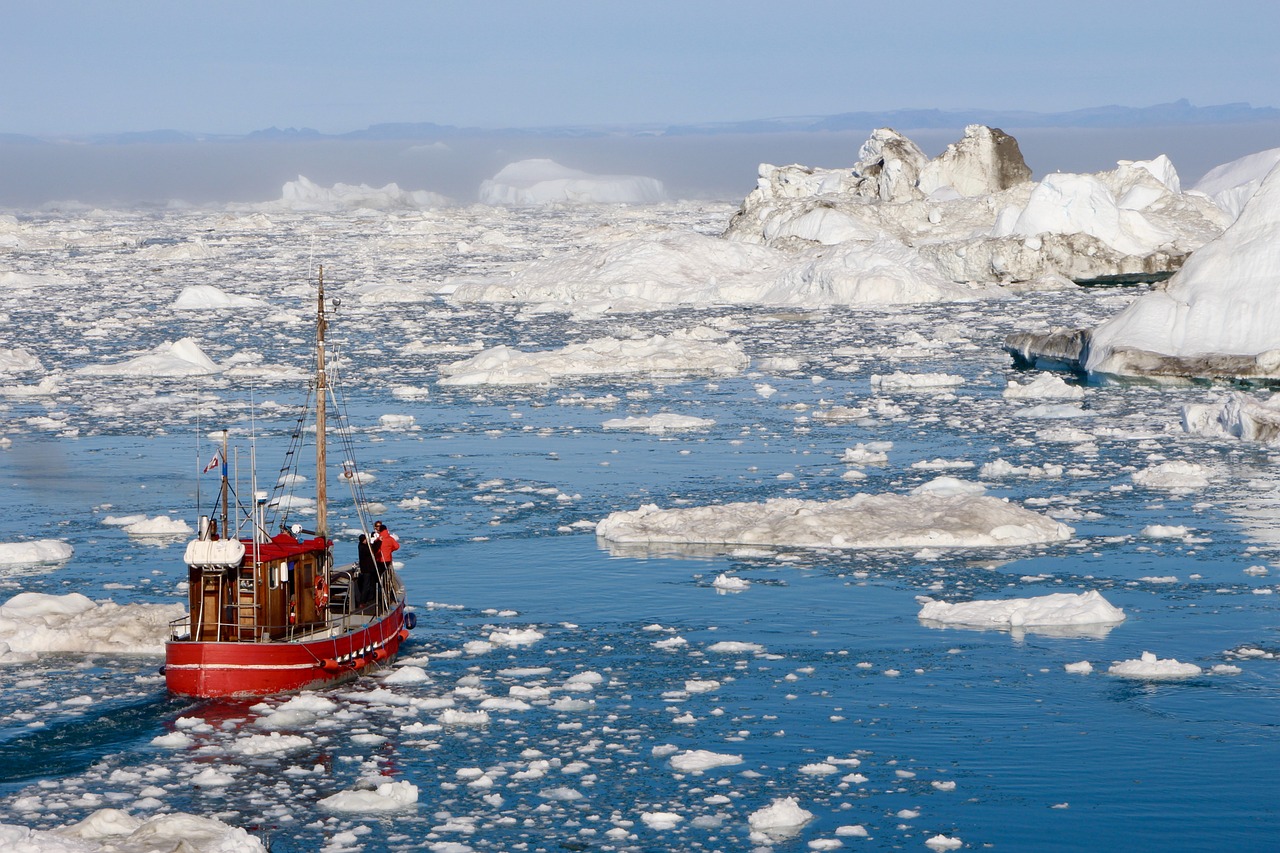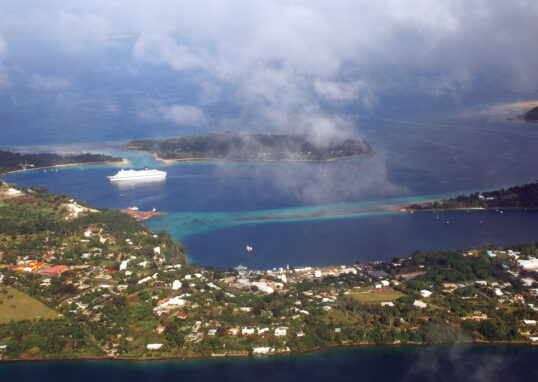
Greenland Unbound: A Journey Across the Last Great Ice Wilderness
Awe-inspiring Greenland, which holds one of the world’s highest ice sheets in its grip, is one of the most magnificent and natural sites on our planet. With a total area of 1.7 million square kilometers (656,000 square miles), it has the second-largest ice cover in Antarctica. Nearly 80% of Greenland’s land area is covered by this large ice sheet, which is a primary factor influencing the Earth’s climate and sea levels. It is both one of the cardinal points of the island and a part of it that tourists relish and scientists use to accomplish their mischief. The snow plate is a thriving and dynamic air, where the glaciers have come to settle down the sea and the icebergs into Foggies. Searmek Kujallake Glacier, one of the fastest and busiest glaciers in the world, brings humongous icebergs that drift to Disco Bay and form an interesting procession. Boat and helicopter tours provide exceptional vistas of this land of ice and adventure.
The Ice Sheet offers ice suit facilities for adventure-seekers, dog sledding, and exploring the area. The tours allow tourists to experience its vast, icy spread, where silence and distance impart a deep sense of fear. The Arctic Circle Trail is a long-distance tour that offers a unique way to experience the rugged beauty of Greenland, passing through valleys, mountains, and snowy plains.

Greenland’s Ice Sheet – Majestic Natural Wonder
Key Features and Attractions
Ice Sheet Composition
Thickness and Depth
This is because the ice sheet is as thick as 3,200 meters (10,500 feet) in some areas, but the average thickness is 2,135 meters (7,005 feet). It has 2.9 million cubic kilometers of ice, which could add 7.2 meters to sea level rise if all were to melt.
Glaciers
One of the most prominent glaciers in the ice sheet is the Jakobshavn Glacier (Sermeq Kujalleq), which is among the world’s most rapidly flowing glaciers, and the Petermann Glacier to the north. These glaciers are the primary areas where the ice flows and the icebergs break off.
Tourist Activities
Helicopter and Plane Tours: One of the most admired ways of flying over the Greenland Ice Sheet is by Helicopter or Plane Tour. These vehicle options offer visitors fine views of vast ice sheets, high altitudes, extreme cold areas of snow, and gigantic rock walls. Some tours also make stops on the same ice sheet, where passengers enjoy walking on this vast wilderness of ice.
Ice Cap Trekking
However, this same data is old enough, and it would be more convenient if it were fresh, as this would not only fill the gap in the climate’s history but also contribute to weather forecasts and disaster preparedness, which are the reasons for prioritizing this area of science.
Glacier Cruises
Greenland’s beautiful coastline can also be explored on tourism cruises, allowing visitors to observe the ice sheets from the sea. The view of breaking ice masses from glaciers floating on the ocean is a fantastic experience, especially in places like the Ilulissat Icefjord, a UNESCO World Heritage site.
Scientific Significance
Climate Research: The Greenland Ice Sheet is a prime site for researching climate change. The ice sheet’s conditions are under control, and scientists are responsible for collecting data on the flow of ice, the melting rate, and the impact of high temperatures on its stability. Investigating Greenland is crucial in the context of global sea-level rise, and predicting climate change is also informed by this scenario.
Ice Cores
Scientists use ice cores from the ice sheet to evaluate past climate conditions. These cores, obtained from the Earth’s atmosphere, reveal what was happening there hundreds of thousands of years ago, thereby not only filling the gap in historical climate patterns but also aiding in weather forecasting and disaster preparedness.
Environmental Impact
Melting and Sea-Level Rise
Global warming is causing the Greenland Ice Sheet to melt at an unprecedented rate these days. This is one of the major causes of sea-level rise worldwide, and coastal communities are likely to face its consequences.
Ecosystem Changes: The melting ice sheet has altered high-latitude ecosystems by reducing freshwater input, affecting the marine biosphere, and altering ocean currents. These changes also have broader consequences for global circulation patterns and, consequently, contribute to the functioning of the climate system.
Greenland’s ice record is another important field of scientific research. Scientists study glaciers, ice cores, and melted water to understand climate change and its global impacts. The ice core obtained from the sheet gives a summary of the Earth’s climate history, covering hundreds of thousands of years. The rapid melting of snow sheets over the past few decades has raised concerns about the increasing sea level and its effects on coastal societies worldwide.
The surrounding cities and towns, such as Congress and Nuyuk, offer a glimpse into Greenland’s unique culture and lifestyle. The inhabitants of Intepe have lived in this unforgiving climate for centuries, and their traditions, which include hunting, fishing, and storytelling, are all snow—and sea-related.
Best Time to Visit
Summer Season (June to August):
The glacier peaks during the lower temperature months, with fewer daylight hours. This period is optimal for those arriving for dog sledding or horse riding, as the sun never sets during the day.
Winter Season (November to March)
Furthermore, witnessing the ice sheet completely frozen is an unforgettable experience, and winter conditions are more severe due to low temperatures and very short daylight. If you have a special interest in the Arctic, tour organizers may also offer a unique insight into sled dogs and a chance to view the Northern Lights.
Accessibility and Amenities
Getting There
The primary access points to the Greenland Ice Sheet are through towns such as Kangerlussuaq and Ilulissat, which have airports with flights from Iceland and Denmark. Visitors can arrange guided tours, helicopter flights, and other excursions to the ice sheet from these towns.
Accommodations
While accommodations are not available on the ice sheet itself, nearby towns offer a range of lodging options, from hotels to guesthouses. Some tour operators provide camping experiences on the ice for those seeking a more adventurous stay.
Safety Considerations: Reaching the Greenland Ice Sheet requires careful planning and preparation. It is an inhospitable world with rapidly changing weather and trying terrain. Be sure to go with someone who knows what they are doing and is provided with emergency equipment.
Greenland’s Ice Sheet is an awe-inspiring natural wonder covering more than 1.7 million square kilometers and is the world’s second-largest ice mass after Antarctica. The ice sheet covers about 80% of Greenland’s surface; thus, it features high cliffs and numerous canyons, making it even more breathtakingly beautiful. What makes the Greenland Ice Sheet such a high destination is that it is a surreal place with its topography created by ice and a time-like mountain ship that will revolutionize how you perceive the world. Adventurers can find their way to the glacier’s edge by helicopter ride, snowmobiling, or joining one of the numerous glacier tours, which provide close encounters with the vast ice formations and unique geological features. The out-and-out grandeur of the ice sheet is not just a soothing experience but a nearly out-of-this-world one, where only the sounds of cracking ice and distant wind interrupt the silence.
The Greenland ice sheet has a significant impact on global sea levels. It helps reduce the emissions of all greenhouse gases from the atmosphere during photosynthesis over a massive area where the ice extends. Indeed, scientific studies have been performed to address climate change issues. Ilulissat is an attractive city, offering a mixture of modern functions and traditional Inuit culture. Visitors can discover the Ilulist museum, which provides insight into the history and culture of the local Inten community, along with life and the work of the Danish explorer Nood Rasmusen. The city is also a hub for external activities, including boat tours, helicopter trips, and hiking trails that offer fantastic views of the Icefjord and the surrounding landscape.
Conclusion
The Ice Cap of Greenland is a sight to behold and a venue of immense scientific importance. It is a vast and icy area with unique landscapes, playing a crucial role in the Earth’s climate system. This makes it a must-see destination for nature lovers, adventurers, and those seeking insight into our planet’s environment. If you hike across the snow, fly over a few glaciers, or witness climate change firsthand, visiting Greenland’s ice sheet lets you see one of Earth’s most remote and beautiful places. The Icefjord Center showcases a modern architectural marvel, highlights the impact of climate change, and explores the cultural significance of glaciology in the context of the Icefjord. It serves as a first point of contact for visitors who discover the field, offering guided tourism and educational programs. Ilulissat Icefjord is the crown jewel of Greenland’s ice cap area, offering a unique blend of natural beauty, cultural heritage, and scientific significance. It’s a fantastic landscape and one of the most dear destinations in this remote and enchanting part of the world.









